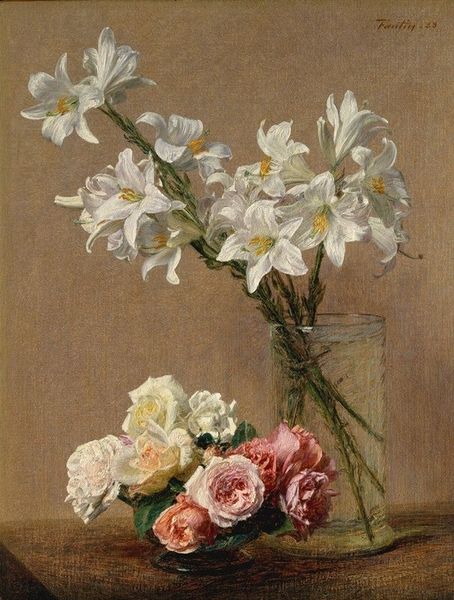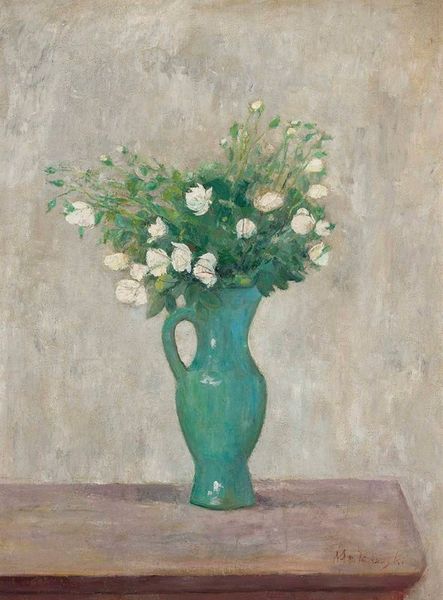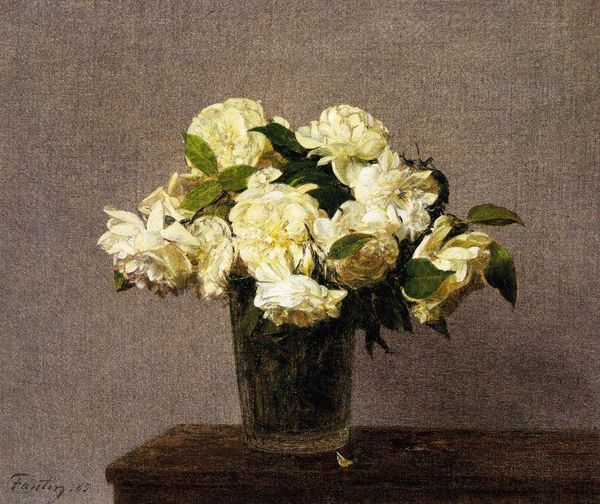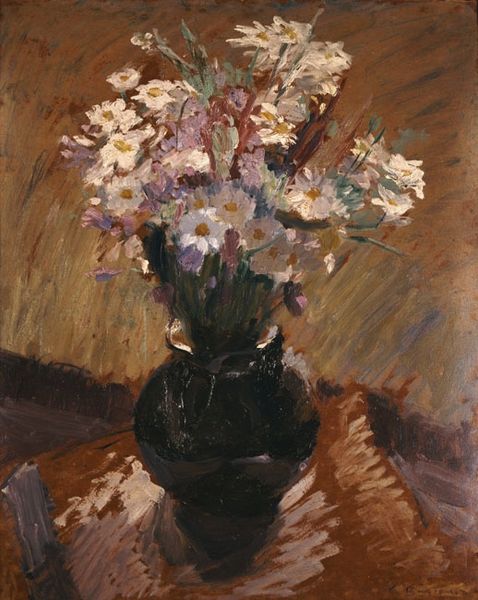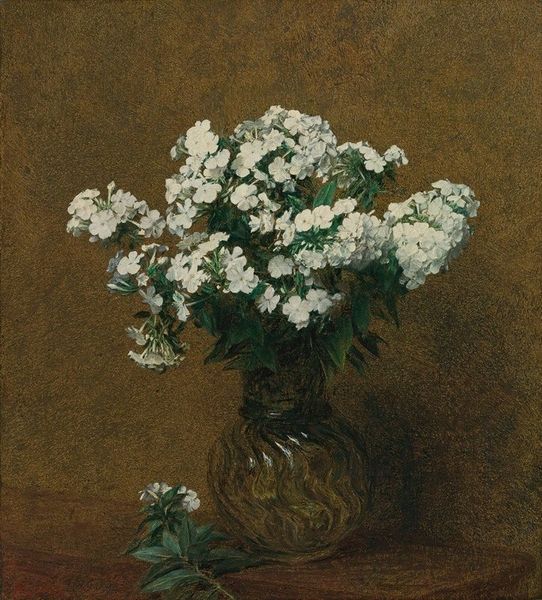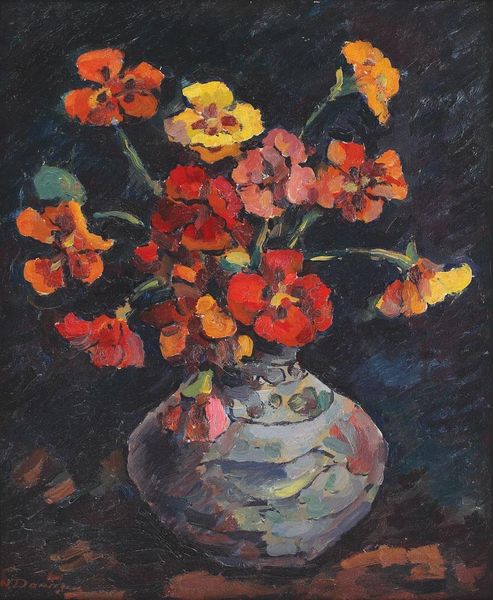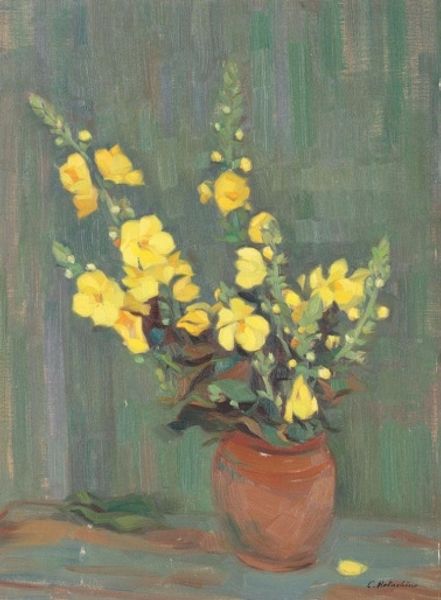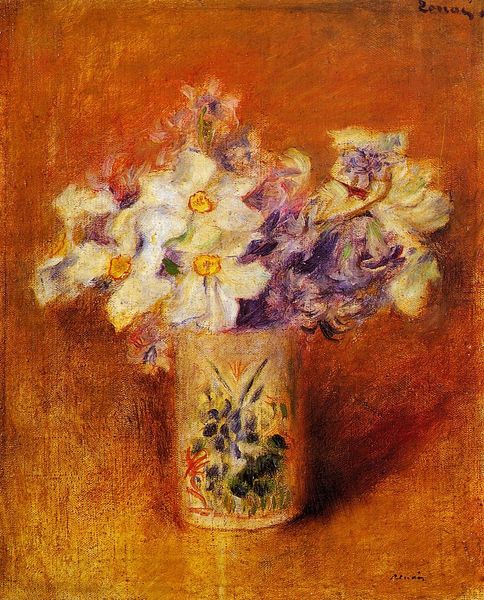
Copyright: Public domain
Curator: Before us is "Narcisses in an Opaline Glass Vase," a work painted in 1875 by Henri Fantin-Latour. It's an oil on canvas, typical of his still life compositions. Editor: Well, my first thought? Quiet melancholy. The dark backdrop, the wilting blooms... it whispers of fading beauty. It's as if the fleeting nature of existence is caught in these brushstrokes. Curator: Fantin-Latour was working during a time when the hierarchy of painting was quite rigid. History painting was king, portraiture next, with still life at the bottom. But he elevates the genre. He injects such feeling. These aren't just flowers; they’re characters in a drama. And they were sold on open market! Editor: I feel that drama. See how the light caresses some petals while others remain shadowed? It is less a painting of flowers, than painting the light touching flowers. It creates this delicious contrast, the tension between vibrancy and decay. It almost feels rebellious given painting light in that way hadn't caught on yet. Curator: The choice of the vase itself adds another layer. The opaline glass would have been a relatively novel material at the time. A product of industrial innovation now cradling the gifts of nature. Did that conflict affect the open art markets you mention? Editor: Potentially. The tension speaks to anxieties and social fascinations during a period of enormous industrial expansion, yes. Fantin-Latour exhibited at the Salon, which at that point had been running for at least a hundred years. His painting, however still life it was, provided a very marketable sentiment for bourgeois domestic life. I think he knew this was on display to the people. Curator: A clever strategy perhaps, a subtle way of infiltrating the system while pursuing his artistic passions. It invites me to consider our relationship with beauty, and consumerism. Are we more likely to enjoy art or consume it, and what about natural objects or sentimental representations, which could overlap at times. Editor: And maybe the narcissus, in particular. They symbolize ego and vanity. So the whole scene might be about seeing your reflection in beauty, contemplating your own mortality... heavy themes hidden in something as seemingly simple as a vase of flowers! I guess one could make the observation it makes one's skin crawl, even. Curator: Ultimately, "Narcisses in an Opaline Glass Vase" demonstrates how a simple subject can be so richly complex, capturing a moment, a mood, an era. Editor: Agreed. It's a reminder to appreciate the quiet beauty in impermanence and acknowledge how capitalism has shaped so much of our lives since. I certainly won't think of floral art quite the same.
Comments
No comments
Be the first to comment and join the conversation on the ultimate creative platform.

